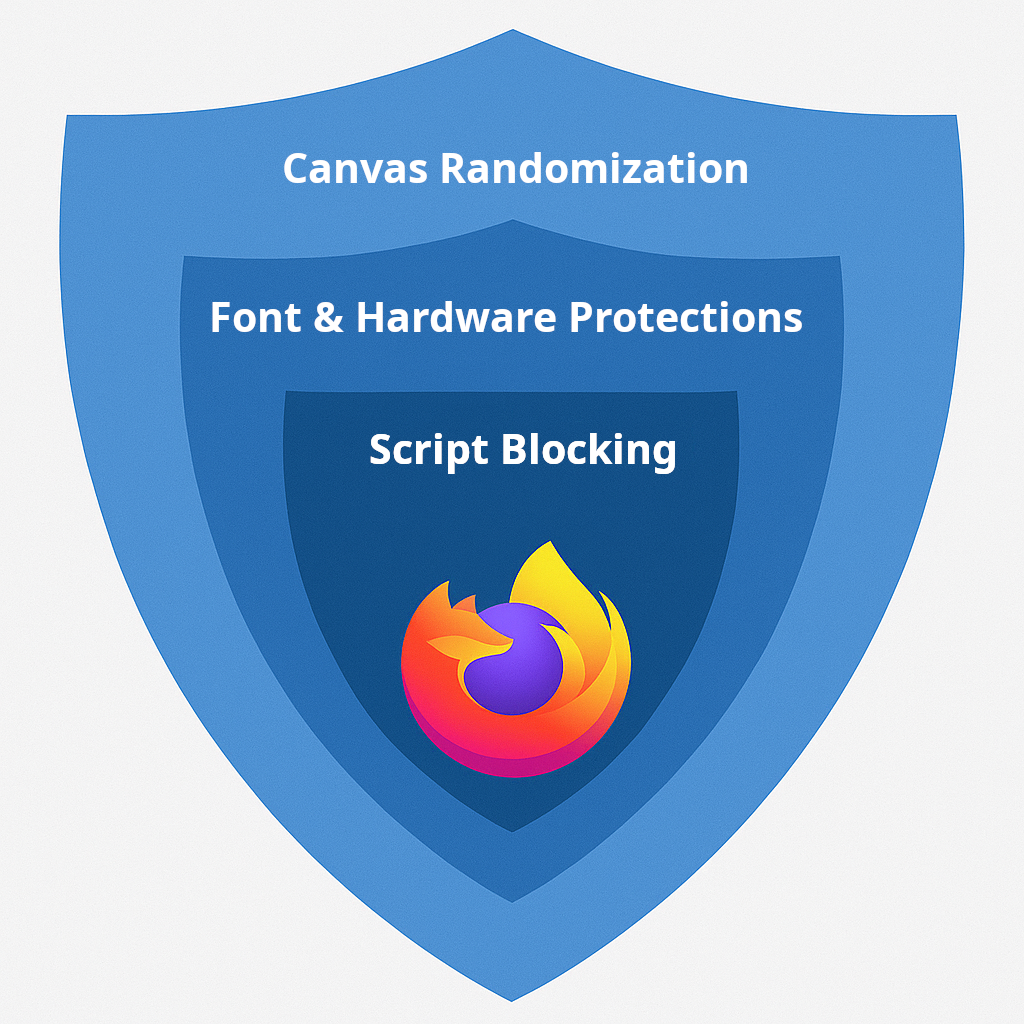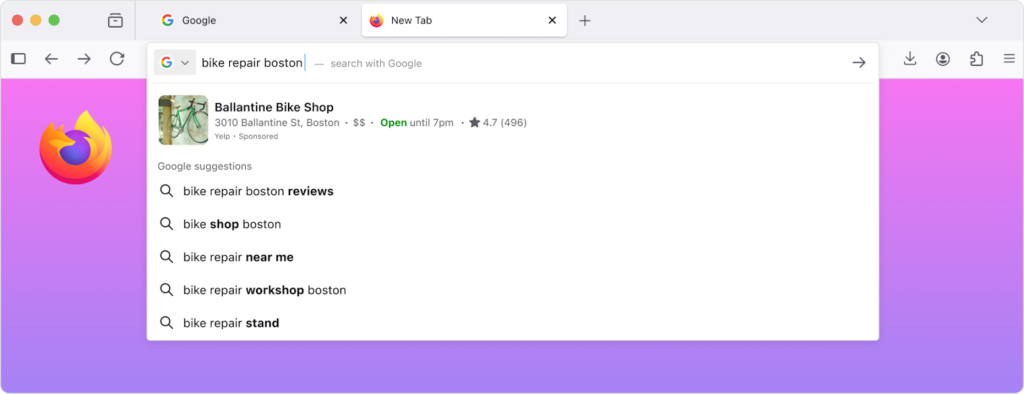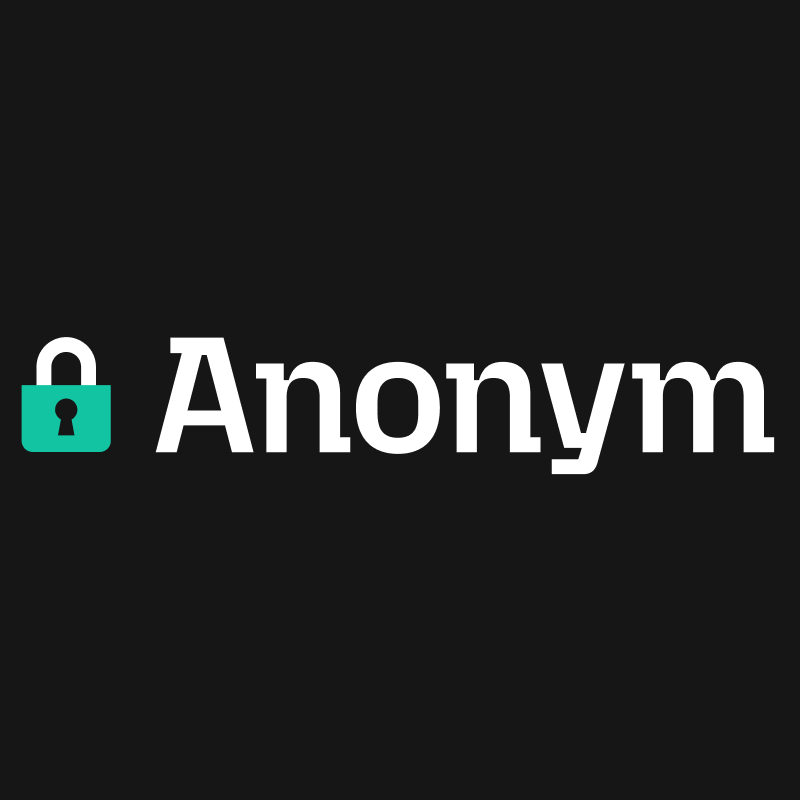
Continuing my series on ergonomic ref-counting, I want to explore another idea, one that I’m calling “just call clone (or alias)”. This proposal specializes the clone and alias methods so that, in a new edition, the compiler will (1) remove redundant or unnecessary calls (with a lint); and (2) automatically capture clones or aliases in move closures where needed.
The goal of this proposal is to simplify the user’s mental model: whenever you see an error like “use of moved value”, the fix is always the same: just call clone (or alias, if applicable). This model is aiming for the balance of “low-level enough for a Kernel, usable enough for a GUI” that I described earlier. It’s also making a statement, which is that the key property we want to preserve is that you can always find where new aliases might be created – but that it’s ok if the fine-grained details around exactly when the alias is created is a bit subtle.
The proposal in a nutshell
Part 1: Closure desugaring that is aware of clones and aliases
Consider this move future:
fn spawn_services(cx: &Context) {
tokio::task::spawn(async move {
// ---- move future
manage_io(cx.io_system.alias(), cx.request_name.clone());
// -------------------- -----------------------
});
...
}
Because this is a move future, this takes ownership of cx.io_system and cx_request_name. Because cx is a borrowed reference, this will be an error unless those values are Copy (which they presumably are not). Under this proposal, capturing aliases or clones in a move closure/future would result in capturing an alias or clone of the place. So this future would be desugared like so (using explicit capture clause strawman notation):
fn spawn_services(cx: &Context) {
tokio::task::spawn(
async move(cx.io_system.alias(), cx.request_name.clone()) {
// -------------------- -----------------------
// capture alias/clone respectively
manage_io(cx.io_system.alias(), cx.request_name.clone());
}
);
...
}
Part 2: Last-use transformation
Now, this result is inefficient – there are now two aliases/clones. So the next part of the proposal is that the compiler would, in newer Rust editions, apply a new transformat called the last-use transformation. This transformation would identify calls to alias or clone that are not needed to satisfy the borrow checker and remove them. This code would therefore become:
fn spawn_services(cx: &Context) {
tokio::task::spawn(
async move(cx.io_system.alias(), cx.request_name.clone()) {
manage_io(cx.io_system, cx.request_name);
// ------------ ---------------
// converted to moves
}
);
...
}
The last-use transformation would apply beyond closures. Given an example like this one, which clones id even though id is never used later:
fn send_process_identifier_request(id: String) {
let request = Request::ProcessIdentifier(id.clone());
// ----------
// unnecessary
send_request(request)
}
the user would get a warning like so:
warning: unnecessary `clone` call will be converted to a move
--> src/main.rs:7:40
|
8 | let request = Request::ProcessIdentifier(id.clone());
| ^^^^^^^^^^ unnecessary call to `clone`
|
= help: the compiler automatically removes calls to `clone` and `alias` when not
required to satisfy the borrow checker
help: change `id.clone()` to `id` for greater clarity
|
8 - let request = Request::ProcessIdentifier(id.clone());
8 + let request = Request::ProcessIdentifier(id);
|
and the code would be transformed so that it simply does a move:
fn send_process_identifier_request(id: String) {
let request = Request::ProcessIdentifier(id);
// --
// transformed
send_request(request)
}
Mental model: just call “clone” (or “alias”)
The goal of this proposal is that, when you get an error about a use of moved value, or moving borrowed content, the fix is always the same: you just call clone (or alias). It doesn’t matter whether that error occurs in the regular function body or in a closure or in a future, the compiler will insert the clones/aliases needed to ensure future users of that same place have access to it (and no more than that).
I believe this will be helpful for new users. Early in their Rust journey new users are often sprinkling calls to clone as well as sigils like & in more-or-less at random as they try to develop a firm mental model – this is where the “keep calm and call clone” joke comes from. This approach breaks down around closures and futures today. Under this proposal, it will work, but users will also benefit from warnings indicating unnecessary clones, which I think will help them to understand where clone is really needed.
Experienced users can trust the compiler to get it right
But the real question is how this works for experienced users. I’ve been thinking about this a lot! I think this approach fits pretty squarely in the classic Bjarne Stroustrup definition of a zero-cost abstraction:
“What you don’t use, you don’t pay for. And further: What you do use, you couldn’t hand code any better.”
The first half is clearly satisfied. If you don’t call clone or alias, this proposal has no impact on your life.
The key point is the second half: earlier versions of this proposal were more simplistic, and would sometimes result in redundant or unnecessary clones and aliases. Upon reflection, I decided that this was a non-starter. The only way this proposal works is if experienced users know there is no performance advantage to using the more explicit form.This is precisely what we have with, say, iterators, and I think it works out very well. I believe this proposal hits that mark, but I’d like to hear if there are things I’m overlooking.
The last-use transformation codifies a widespread intuition, that clone is never necessary
I think most users would expect that changing message.clone() to just message is fine, as long as the code keeps compiling. But in fact nothing requires that to be the case. Under this proposal, APIs that make clone significant in unusual ways would be more annoying to use in the new Rust edition and I expect ultimately wind up getting changed so that “significant clones” have another name. I think this is a good thing.
Frequently asked questions
I think I’ve covered the key points. Let me dive into some of the details here with a FAQ.
Can you summarize all of these posts you’ve been writing? It’s a lot to digest!
I get it, I’ve been throwing a lot of things out there. Let me begin by recapping the motivation as I see it:
- I believe our goal should be to focus first on a design that is “low-level enough for a Kernel, usable enough for a GUI”.
- The key part here is the word enough. We need to make sure that low-level details are exposed, but only those that truly matter. And we need to make sure that it’s ergonomic to use, but it doesn’t have to be as nice as TypeScript (though that would be great).
- Rust’s current approach to
Clone fails both groups of users;
- calls to
clone are not explicit enough for kernels and low-level software: when you see something.clone(), you don’t know that is creating a new alias or an entirely distinct value, and you don’t have any clue what it will cost at runtime. There’s a reason much of the community recommends writing Arc::clone(&something) instead.
- calls to
clone, particularly in closures, are a major ergonomic pain point, this has been a clear consensus since we first started talking about this issue.
I then proposed a set of three changes to address these issues, authored in individual blog posts:
- First, we introduce the
Alias trait (originally called Handle). The Alias trait introduces a new method alias that is equivalent to clone but indicates that this will be creating a second alias of the same underlying value.
- Second, we introduce explicit capture clauses, which lighten the syntactic load of capturing a clone or alias, make it possible to declare up-front the full set of values captured by a closure/future, and will support other kinds of handy transformations (e.g., capturing the result of
as_ref or to_string).
- Finally, we introduce the just call clone proposal described in this post. This modifies closure desugaring to recognize clones/aliases and also applies the last-use transformation to replace calls to clone/alias with moves where possible.
What would it feel like if we did all those things?
Let’s look at the impact of each set of changes by walking through the “Cloudflare example”, which originated in this excellent blog post by the Dioxus folks:
let some_value = Arc::new(something);
// task 1
let _some_value = some_value.clone();
tokio::task::spawn(async move {
do_something_with(_some_value);
});
// task 2: listen for dns connections
let _some_a = self.some_a.clone();
let _some_b = self.some_b.clone();
let _some_c = self.some_c.clone();
tokio::task::spawn(async move {
do_something_else_with(_some_a, _some_b, _some_c)
});
As the original blog post put it:
Working on this codebase was demoralizing. We could think of no better way to architect things - we needed listeners for basically everything that filtered their updates based on the state of the app. You could say “lol get gud,” but the engineers on this team were the sharpest people I’ve ever worked with. Cloudflare is all-in on Rust. They’re willing to throw money at codebases like this. Nuclear fusion won’t be solved with Rust if this is how sharing state works.
Applying the Alias trait and explicit capture clauses makes for a modest improvement. You can now clearly see that the calls to clone are alias calls, and you don’t have the awkward _some_value and _some_a variables. However, the code is still pretty verbose:
let some_value = Arc::new(something);
// task 1
tokio::task::spawn(async move(some_value.alias()) {
do_something_with(some_value);
});
// task 2: listen for dns connections
tokio::task::spawn(async move(
self.some_a.alias(),
self.some_b.alias(),
self.some_c.alias(),
) {
do_something_else_with(self.some_a, self.some_b, self.some_c)
});
Applying the Just Call Clone proposal removes a lot of boilerplate and, I think, captures the intent of the code very well. It also retains quite a bit of explicitness, in that searching for calls to alias reveals all the places that aliases will be created. However, it does introduce a bit of subtlety, since (e.g.) the call to self.some_a.alias() will actually occur when the future is created and not when it is awaited:
let some_value = Arc::new(something);
// task 1
tokio::task::spawn(async move {
do_something_with(some_value.alias());
});
// task 2: listen for dns connections
tokio::task::spawn(async move {
do_something_else_with(
self.some_a.alias(),
self.some_b.alias(),
self.some_c.alias(),
)
});
I’m worried that the execution order of calls to alias will be too subtle. How is thie “explicit enough for low-level code”?
There is no question that Just Call Clone makes closure/future desugaring more subtle. Looking at task 1:
tokio::task::spawn(async move {
do_something_with(some_value.alias());
});
this gets desugared to a call to alias when the future is created (not when it is awaited). Using the explicit form:
tokio::task::spawn(async move(some_value.alias()) {
do_something_with(some_value)
});
I can definitely imagine people getting confused at first – “but that call to alias looks like its inside the future (or closure), how come it’s occuring earlier?”
Yet, the code really seems to preserve what is most important: when I search the codebase for calls to alias, I will find that an alias is creating for this task. And for the vast majority of real-world examples, the distinction of whether an alias is creating when the task is spawned versus when it executes doesn’t matter. Look at this code: the important thing is that do_something_with is called with an alias of some_value, so some_value will stay alive as long as do_something_else is executing. It doesn’t really matter how the “plumbing” worked.
What about futures that conditionally alias a value?
Yeah, good point, those kind of examples have more room for confusion. Like look at this:
tokio::task::spawn(async move {
if false {
do_something_with(some_value.alias());
}
});
In this example, there is code that uses some_value with an alias, but only under if false. So what happens? I would assume that indeed the future will capture an alias of some_value, in just the same way that this future will move some_value, even though the relevant code is dead:
tokio::task::spawn(async move {
if false {
do_something_with(some_value);
}
});
Can you give more details about the closure desugaring you imagine?
Yep! I am thinking of something like this:
- If there is an explicit capture clause, use that.
- Else:
- For non-
move closures/futures, no changes, so
- Categorize usage of each place and pick the “weakest option” that is available:
- For
move closures/futures, we would change
- Categorize usage of each place
P and decide whether to capture that place…
- by clone, there is at least one call
P.clone() or P.alias() and all other usage of P requires only a shared ref (reads)
- by move, if there are no calls to
P.clone() or P.alias() or if there are usages of P that require ownership or a mutable reference
- Capture by clone/alias when a place
a.b.c is only used via shared references, and at least one of those is a clone or alias.
- For the purposes of this, accessing a “prefix place”
a or a “suffix place” a.b.c.d is also considered an access to a.b.c.
Examples that show some edge cased:
Why not do something similar for non-move closures?
In the relevant cases, non-move closures will already just capture by shared reference. This means that later attempts to use that variable will generally succeed:
let f = async {
// ----- NOT async move
self.some_a.alias()
};
do_something_else(self.some_a.alias());
// ----------- later use succeeds
f.await;
This future does not need to take ownership of self.some_a to create an alias, so it will just capture a reference to self.some_a. That means that later uses of self.some_a can still compile, no problem. If this had been a move closure, however, that code above would currently not compile.
There is an edge case where you might get an error, which is when you are moving:
let f = async {
self.some_a.alias()
};
do_something_else(self.some_a);
// ----------- move!
f.await;
In that case, you can make this an async move closure and/or use an explicit capture clause:
Can you give more details about the last-use transformation you imagine?
Yep! We would during codegen identify candidate calls to Clone::clone or Alias::alias. After borrow check has executed, we would examine each of the callsites and check the borrow check information to decide:
- Will this place be accessed later?
- Will some reference potentially referencing this place be accessed later?
If the answer to both questions is no, then we will replace the call with a move of the original place.
Here are some examples:
fn borrow(message: Message) -> String {
let method = message.method.to_string();
send_message(message.clone());
// ---------------
// would be transformed to
// just `message`
method
}
fn borrow(message: Message) -> String {
send_message(message.clone());
// ---------------
// cannot be transformed
// since `message.method` is
// referenced later
message.method.to_string()
}
fn borrow(message: Message) -> String {
let r = &message;
send_message(message.clone());
// ---------------
// cannot be transformed
// since `r` may reference
// `message` and is used later.
r.method.to_string()
}
Why are you calling it the last-use transformation and not optimization?
In the past, I’ve talked about the last-use transformation as an optimization – but I’m changing terminology here. This is because, typically, an optimization is supposed to be unobservable to users except through measurements of execution time (or though UB), and that is clearly not the case here. The transformation would be a mechanical transformation performed by the compiler in a deterministic fashion.
Would the transformation “see through” references?
I think yes, but in a limited way. In other words I would expect
and
let p = &foo;
Clone::clone(p)
to be transformed in the same way (replaced with foo), and the same would apply to more levels of intermediate usage. This would kind of “fall out” from the MIR-based optimization technique I imagine. It doesn’t have to be this way, we could be more particular about the syntax that people wrote, but I think that would be surprising.
On the other hand, you could still fool it e.g. like so
fn identity<T>(x: &T) -> &T { x }
identity(&foo).clone()
Would the transformation apply across function boundaries?
The way I imagine it, no. The transformation would be local to a function body. This means that one could write a force_clone method like so that “hides” the clone in a way that it will never be transformed away (this is an important capability for edition transformations!):
fn pipe<Msg: Clone>(message: Msg) -> Msg {
log(message.clone()); // <-- keep this one
force_clone(&message)
}
fn force_clone<Msg: Clone>(message: &Msg) -> Msg {
// Here, the input is `&Msg`, so the clone is necessary
// to produce a `Msg`.
message.clone()
}
Won’t the last-use transformation change behavior by making destructors run earlier?
Potentially, yes! Consider this example, written using explicit capture clause notation and written assuming we add an Alias trait:
async fn process_and_stuff(tx: mpsc::Sender<Message>) {
tokio::spawn({
async move(tx.alias()) {
// ---------- alias here
process(tx).await
}
});
do_something_unrelated().await;
}
The precise timing when Sender values are dropped can be important – when all senders have dropped, the Receiver will start returning None when you call recv. Before that, it will block waiting for more messages, since those tx handles could still be used.
So, in process_and_stuff, when will the sender aliases be fully dropped? The answer depends on whether we do the last-use transformation or not:
- Without the transformation, there are two aliases: the original
tx and the one being held by the future. So the receiver will only start returning None when do_something_unrelated has finished and the task has completed.
- With the transformation, the call to
tx.alias() is removed, and so there is only one alias – tx, which is moved into the future, and dropped once the spawned task completes. This could well be earlier than in the previous code, which had to wait until both process_and_stuff and the new task completed.
Most of the time, running destructors earlier is a good thing. That means lower peak memory usage, faster responsiveness. But in extreme cases it could lead to bugs – a typical example is a Mutex<()> where the guard is being used to protect some external resource.
How can we change when code runs? Doesn’t that break stability?
This is what editions are for! We have in fact done a very similar transformation before, in Rust 2021. RFC 2229 changed destructor timing around closures and it was, by and large, a non-event.
The desire for edition compatibility is in fact one of the reasons I want to make this a last-use transformation and not some kind of optimization. There is no UB in any of these examples, it’s just that to understand what Rust code does around clones/aliases is a bit more complex than it used to be, because the compiler will do automatic transformation to those calls. The fact that this transformation is local to a function means we can decide on a call-by-call basis whether it should follow the older edition rules (where it will always occur) or the newer rules (where it may be transformed into a move).
Does that mean that the last-use transformation would change with Polonius or other borrow checker improvements?
In theory, yes, improvements to borrow-checker precision like Polonius could mean that we identify more opportunities to apply the last-use transformation. This is something we can phase in over an edition. It’s a bit of a pain, but I think we can live with it – and I’m unconvinced it will be important in practice. For example, when thinking about the improvements I expect under Polonius, I was not able to come up with a realistic example that would be impacted.
Isn’t it weird to do this after borrow check?
This last-use transformation is guaranteed not to produce code that would fail the borrow check. However, it can affect the correctness of unsafe code:
let p: *const T = &*some_place;
let q: T = some_place.clone();
// ---------- assuming `some_place` is
// not used later, becomes a move
unsafe {
do_something(p);
// -
// This now refers to a stack slot
// whose value is uninitialized.
}
Note though that, in this case, there would be a lint identifying that the call to some_place.clone() will be transformed to just some_place. We could also detect simple examples like this one and report a stronger deny-by-default lint, as we often do when we see guaranteed UB.
Shouldn’t we use a keyword for this?
When I originally had this idea, I called it “use-use-everywhere” and, instead of writing x.clone() or x.alias(), I imagined writing x.use. This made sense to me because a keyword seemed like a stronger signal that this was impacting closure desugaring. However, I’ve changed my mind for a few reasons.
First, Santiago Pastorino gave strong pushback that x.use was going to be a stumbling block for new learners. They now have to see this keyword and try to understand what it means – in contrast, if they see method calls, they will likely not even notice something strange is going on.
The second reason though was TC who argued, in the lang-team meeting, that all the arguments for why it should be ergonomic to clone a ref-counted value in a closure applied equally well to clone, depending on the needs of your application. I completely agree. As I mentioned earlier, this also [addresses the concern I’ve heard with the Alias trait], which is that there are things you want to ergonomically clone but which don’t correspond to “aliases”. True.
In general I think that clone (and alias) are fundamental enough to how Rust is used that it’s ok to special case them. Perhaps we’ll identify other similar methods in the future, or generalize this mechanism, but for now I think we can focus on these two cases.
What about “deferred ref-counting”?
One point that I’ve raised from time-to-time is that I would like a solution that gives the compiler more room to optimize ref-counting to avoid incrementing ref-counts in cases where it is obvious that those ref-counts are not needed. An example might be a function like this:
fn use_data(rc: Rc<Data>) {
for datum in rc.iter() {
println!("{datum:?}");
}
}
This function requires ownership of an alias to a ref-counted value but it doesn’t actually do anything but read from it. A caller like this one…
…doesn’t really need to increment the reference count, since the caller will be holding a reference the entire time. I often write code like this using a &:
fn use_data(rc: &Rc<Data>) {
for datum in rc.iter() {
println!("{datum:?}");
}
}
so that the caller can do use_data(&source) – this then allows the callee to write rc.alias() in the case that it wants to take ownership.
I’ve basically decided to punt on adressing this problem. I think folks that are very performance sensitive can use &Arc and the rest of us can sometimes have an extra ref-count increment, but either way, the semantics for users are clear enough and (frankly) good enough.
















 <figcaption class="wp-element-caption">With its minimalist pop-up interface, Gyazo makes it easy to clip elements, sections, or entire web pages. </figcaption>
<figcaption class="wp-element-caption">With its minimalist pop-up interface, Gyazo makes it easy to clip elements, sections, or entire web pages. </figcaption> <figcaption class="wp-element-caption">Give yourself a custom message of encouragement (or scolding?) whenever you try to visit a restricted site with Block Site.</figcaption>
<figcaption class="wp-element-caption">Give yourself a custom message of encouragement (or scolding?) whenever you try to visit a restricted site with Block Site.</figcaption> <figcaption class="wp-element-caption">Access all of Tabby’s features in one convenient pop-up. </figcaption>
<figcaption class="wp-element-caption">Access all of Tabby’s features in one convenient pop-up. </figcaption>
































 <figcaption>Top to bottom: experimental mode off, experimental mode on.</figcaption>
<figcaption>Top to bottom: experimental mode off, experimental mode on.</figcaption>












 <figcaption class="wp-element-caption">If there are multiple Reddit threads about the video you’re watching, the extension will display them in tab form in the YouTube comment section. </figcaption>
<figcaption class="wp-element-caption">If there are multiple Reddit threads about the video you’re watching, the extension will display them in tab form in the YouTube comment section. </figcaption> <figcaption class="wp-element-caption">Dictionary Anywhere — no more navigating away from a page just to get a word check.</figcaption>
<figcaption class="wp-element-caption">Dictionary Anywhere — no more navigating away from a page just to get a word check.</figcaption> <figcaption class="wp-element-caption">Dark Background and Light Text goes easy on the eyes.</figcaption>
<figcaption class="wp-element-caption">Dark Background and Light Text goes easy on the eyes.</figcaption> <figcaption class="wp-element-caption">Clippings handles bulk cutting/pasting. </figcaption>
<figcaption class="wp-element-caption">Clippings handles bulk cutting/pasting. </figcaption>
 <figcaption class="wp-element-caption">Right-click any highlighted text to activate To Google Translate.</figcaption>
<figcaption class="wp-element-caption">Right-click any highlighted text to activate To Google Translate.</figcaption>

 <figcaption class="wp-element-caption">Members of the Fox Recap team at California State University, Monterey Bay, presenting their capstone project. Pictured (left to right): Taimur Hasan, Mozilla community manager Matt Cool, Kate Sawtell, and Diego Valdez. Not pictured: Peter Mitchell.</figcaption>
<figcaption class="wp-element-caption">Members of the Fox Recap team at California State University, Monterey Bay, presenting their capstone project. Pictured (left to right): Taimur Hasan, Mozilla community manager Matt Cool, Kate Sawtell, and Diego Valdez. Not pictured: Peter Mitchell.</figcaption>


 <figcaption class="wp-element-caption">Create and switch between different browsing setups</figcaption>
<figcaption class="wp-element-caption">Create and switch between different browsing setups</figcaption> <figcaption class="wp-element-caption">Search what you see with a simple right-click on an image</figcaption>
<figcaption class="wp-element-caption">Search what you see with a simple right-click on an image</figcaption>
 <figcaption class="wp-element-caption">Cover credit: Photography by Spencer Lowell for TIME
</figcaption>
<figcaption class="wp-element-caption">Cover credit: Photography by Spencer Lowell for TIME
</figcaption>












 <figcaption class="wp-element-caption"> Customize your billionaire avatar at
<figcaption class="wp-element-caption"> Customize your billionaire avatar at  <figcaption class="wp-element-caption">Try out your billionaire in our AR holobox at TwitchCon booth #2805</figcaption>
<figcaption class="wp-element-caption">Try out your billionaire in our AR holobox at TwitchCon booth #2805</figcaption>











